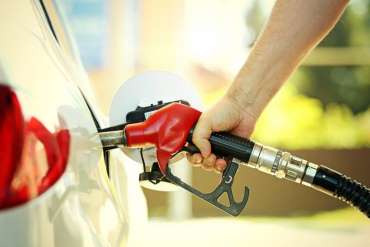Displaying items by tag: Fuel
Fuel has a shelf life: Here's how long gasoline and diesel can stay in the tank
Many people have had their cars parked on the street or in the garage for a long time, but hardly anyone has wondered what happens to the fuel. Gasoline and diesel have a shelf life, and aging in a car tank cannot be compared to quality wines, which get better if stored properly.
Gasoline and diesel cannot sit in the tanks for too long, or they can, but in that case they will lose their properties and when you start the car after a few months of standing, there could be problems.
You should use up the gas in the tank after two to three months. Otherwise, it will become a liquid that could damage your engine. Diesel in the tank can last just as short. In biodiesel, with which diesel fuel is mixed, there are bacteria, which will start to work when standing and because of this, sludge deposits will be formed.
Corrosion of the tank or clogging of the fuel supply system is also possible. The diesel in the reservoir should be used up in approximately three months, and at the latest in six months. All these are of course recommendations, because no one knows exactly how much fuel is in the tank, what the temperatures are and how much oxygen is in the tank.
Spent fuel in the tank is not difficult to identify, especially if it gets into your vehicle's engine. The check engine light will come on, which of course can be on for a myriad of other reasons. In this case, it is best to take your vehicle to a service center where they will find the cause of the problem.
As the HAK Review writes, the most common symptoms of using outdated fuel are problems with starting, ignition, rough idling, or loss of power when accelerating. Spoiled fuel must be removed from the tank.
Which cars consume more fuel than the factory states?
For years now, the EU has been imposing a WLTP test on car manufacturers to determine the fuel consumption of their models. These are the data we find in the car specifications as factory declared consumption. However, the British WhatCar conducted extensive testing and research of cars and their consumption, ie they measured the differences in fuel consumption in relation to official data.
The cars tested by WhatCar had an average of 6.3 percent worse results than in the official test that the European Union imposes on all cars to determine their consumption (WLTP), reports HAK magazine.
The British WhatCar conducted a large testing and research of cars and their consumption, ie the difference from the official consumption. The new official WLTP test that has been current since 2019 is much closer to the truth than the previously used NEDC test.
By comparison, the difference in the older NEDC cycle was as much as 20.2 percent in previous WhatCar tests. You can now rely more on the consumption data provided by car brands.
Like other tests, the WhatCar test was conducted in laboratory conditions, but based on the actual route through cities, villages and highways, ie it is even more realistic and closer to the actual conditions than the WLTP test. It is astonishing that the cars in the study managed to achieve an even more economical result than the official data.
Here are the top five results:
5. Honda Civic Type R
Very impressive is the fifth place of the Honda Civic Type R. The 320 hp sports car proved to be 9.2 percent more efficient than the WLTP test showed, something you would not expect from such a powerful model.
4. Dacia Duster
Right in front of the Civic is the Dacia Duster with a 130 hp petrol engine. Dacia is already known for good value for money, and the economy of the 1.3-liter engine adds another plus. The car consumes 10.1 percent less than stated.
3. Volkswagen Up!
A small, light city car that has a 10.5 percent better result than in official tests. Up! is the most economical model on this list.
2. Honda CR-V (hybrid)
In second place is the hybrid, again Honda. In the CR-V, the petrol engine is not assisted by an electric motor, as is usually the case. The gasoline engine here works as a generator for the electric motor. The petrol engine can therefore run at optimum load, which means it consumes less. The CR-V is still 12.3 percent more economical in practice than in the tests.
1. Ford Ranger Pickup
Tests show that it is not the most economical, due to its "structure" as well as a powerful diesel engine, but according to the WhatCar test, in practice it achieves as much as 18.6 percent better results than in official tests.
These cars pollute more in real conditions:
5. Audi A3 sedan
The Audi A3 had 16 percent less success than what the tests promised if you opted for the 35 TFSI.
4. Renault Clio
It is more impressive, however, to see numerous hybrids on the list. For example, the fourth place is occupied by Renault Clio, which spent 19.6 percent more than the stated consumption per WLTP.
3. Ford Fiesta
In third place is the Ford Fiesta with a 1.0 petrol engine and 155 hp. Like the A3, this Ford has a pretty powerful engine.
2. Suzuki Swace
And in the penultimate place is a hybrid, the Suzuki Swace, which scored 21.6 percent worse than its WLTP test.
1. BMW 420d
The big loser of the test though is the BMW 420d. According to the WhatCar test, the difference in consumption is as much as 26.4 percent higher than stated.
What will happen to the car engine if you run out of fuel while driving ?!
It happens, it is not uncommon… Forget it, you are bothered by worries at work or in the family and you simply run out of fuel while driving. Can anything happen to a car, that is, can major breakdowns occur?
In older cars, if you run out of fuel, breakdowns on injectors and diesel fuel pumps are possible.
Car manufacturers claim that their new models are so constructed that there will be no problem if you run out of fuel. That is, there should be no engine failures. Nevertheless, do not wait for the tank to empty, as dirt from the bottom of the tank will be injected into the system. They should be taken care of by a fuel filter, ie prevented from entering the engine, but it is better not to cause happiness.
In older cars, if you run out of fuel, breakdowns on injectors and diesel fuel pumps are possible. Basically, always react on time and drive to the nearest gas station.













